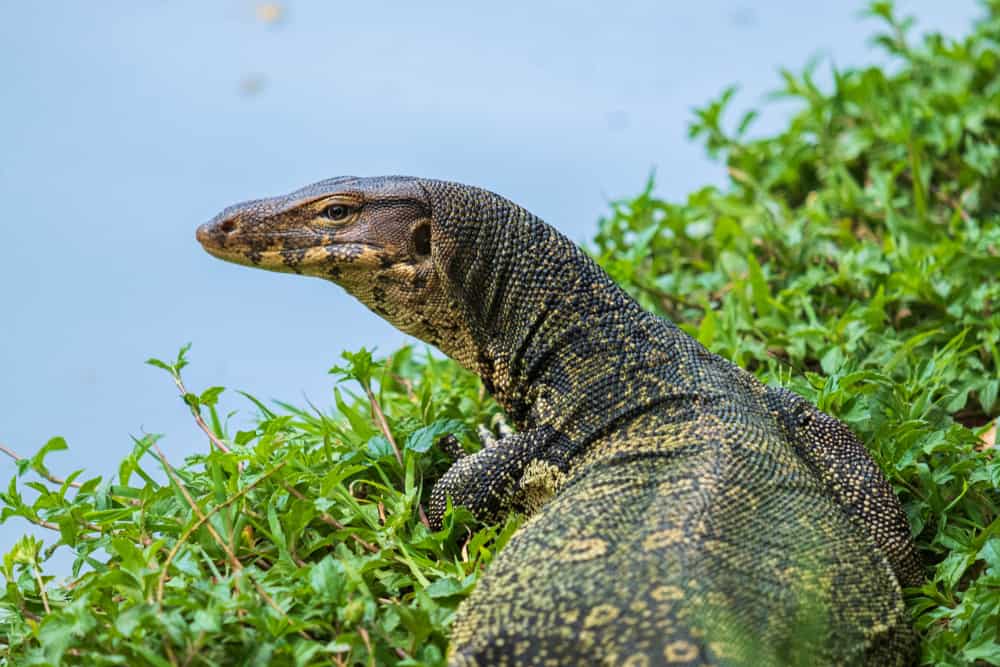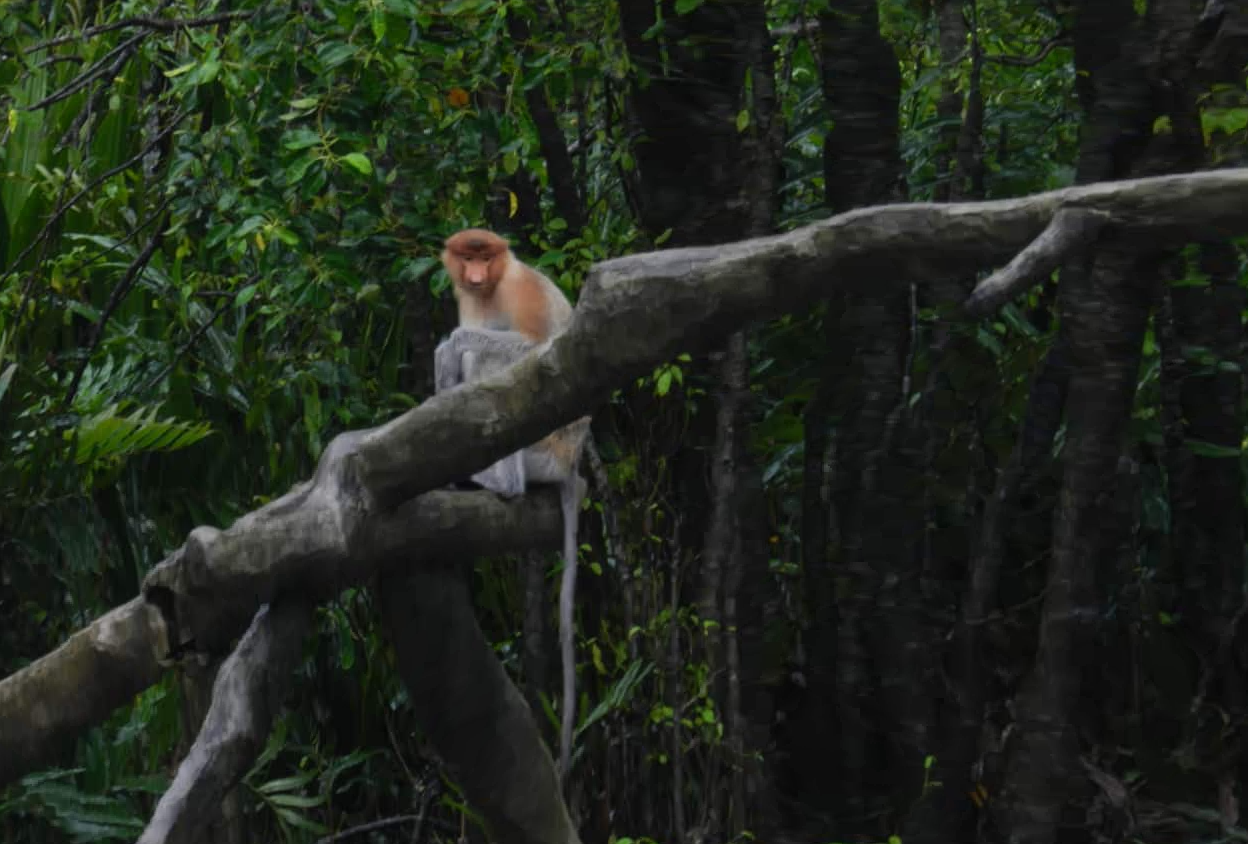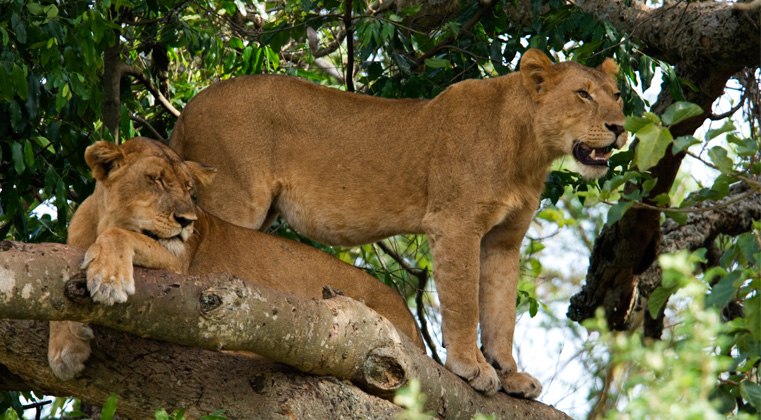
Who Wins in the Mangrove Forest When Monkeys and Lizards Compete for Resources?
It’s a battle for resources in the mangrove forests of the Sundarbans in India. In this wild place, rhesus macaque monkeys and massive monitor lizards may come face to face in search of food. Who wins between the two species?
In a fascinating YouTube video posted by BIRDRAGHU, out of the Sundarban mangrove forest, we can see what happens when rhesus macaque monkeys encounter Asian water monitors over a pile of fallen fruit on the ground.

Water monitor lizards are the second-largest lizards in the world.
About the Mangrove Forests of Sundarbans
The largest mangrove forest in the world ranges across the Bangladesh and Indian border. The Sundarbans is a unique ecosystem home to many rare species, such as the Bengal tiger. This rich and diverse wetland was named a UNESCO World Heritage site in 1987.
Besides the many rare species, like Irrawaddy dolphins and Indian pythons, other more commonly found animals also thrive in the mangrove forest. For example, rhesus macaque monkeys and Asian water monitor lizards often run into each other while foraging for food.
About Rhesus Macaques
Rhesus macaques are intelligent non-human primates that have managed to adapt to a number of different environments. Though some live deep in the forest, others have adapted well to urban life. The macaques that roam through villages and cities often cause mischief for the humans living there by stealing food and breaking into buildings. Macaques aren’t very large with the males weighing up to 17 pounds. Females are usually around 8 to 12 pounds.
Rhesus macaques live in large groups, called troops, of 20 to 200 individuals. These troops are hierarchical, with an alpha leader guiding the group. The monkeys are highly social and rely on interaction with others for their development as much as humans do. Orphaned baby macaques that have left their mothers too soon exhibit abnormal behavior and aggression.
About Asian Water Monitors
Unlike monkeys, Asian water monitors are a much more solitary species. However, they will work together to obtain resources when needed. They are semiaquatic and live near water sources. Though they are not known to be aggressive, their bite is strong enough to break human bones. They are also venomous, although it’s not strong enough to harm humans.
Water monitors are the second-heaviest lizards after the Komodo dragon. They can weigh around 35 to 44 pounds with lengths of over six feet.
Do Rhesus Macaques Eat the Same Foods as Water Monitor Lizards?
Rhesus macaques and water monitor lizards are both omnivores, meaning they eat both plants and meat. Macaques’ main diet consists of grass, roots, fruit, and vegetables. They may also eat insects or chickens. Those that inhabit villages and cities are known to raid the garbage and will eat just about anything.
Water monitor lizards mainly eat meat and will prey on frogs, rodents, turtles, and other small animals. They are opportunistic eaters, however, and also scavenge for the decayed flesh of animals and humans. Furthermore, they are known to snack on fruit and vegetables.
When Monkeys and Lizards Clash Over Resources
In the video we mentioned above, there is a pile of fruit that has fallen on the forest floor. A macaque family has stopped to take advantage of the feast when a water monitor approaches, with its tongue out. Lizards stick their tongues in the air to taste their environment and hunt for food. This lizard clearly wants to take over what the monkeys are eating.

A troop of rhesus macaques is unfazed when their eating grounds are overtaken by huge water monitors.
Soon, more lizards show up and chase the monkeys from their spot. The stubborn monkeys refuse to leave the area completely, with some of the braver individuals swatting the lizards in the face. Some monkeys stay back, while others race in and grab food right from under the lizards’ noses.

The monkeys hold their own when large lizards stare them down for their food.
More lizards keep appearing, but the monkey troop continues to hold its ground. This time, there seems to be enough food for everyone to get a bite, without an epic battle.
Are Water Monitor Lizards Aggressive?
Despite its size, the Asian water monitor is not known to be aggressive. Although the situation grew tense in the video footage, neither group seemed on the verge of an actual fight. However, it was smart of the monkeys to keep their distance. The monitors way outsized the monkeys and could have done serious damage with their powerful bite and serrated teeth. Fortunately for the monkeys, monitors are more likely to whip their tails to warn others before they bite.


